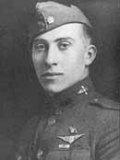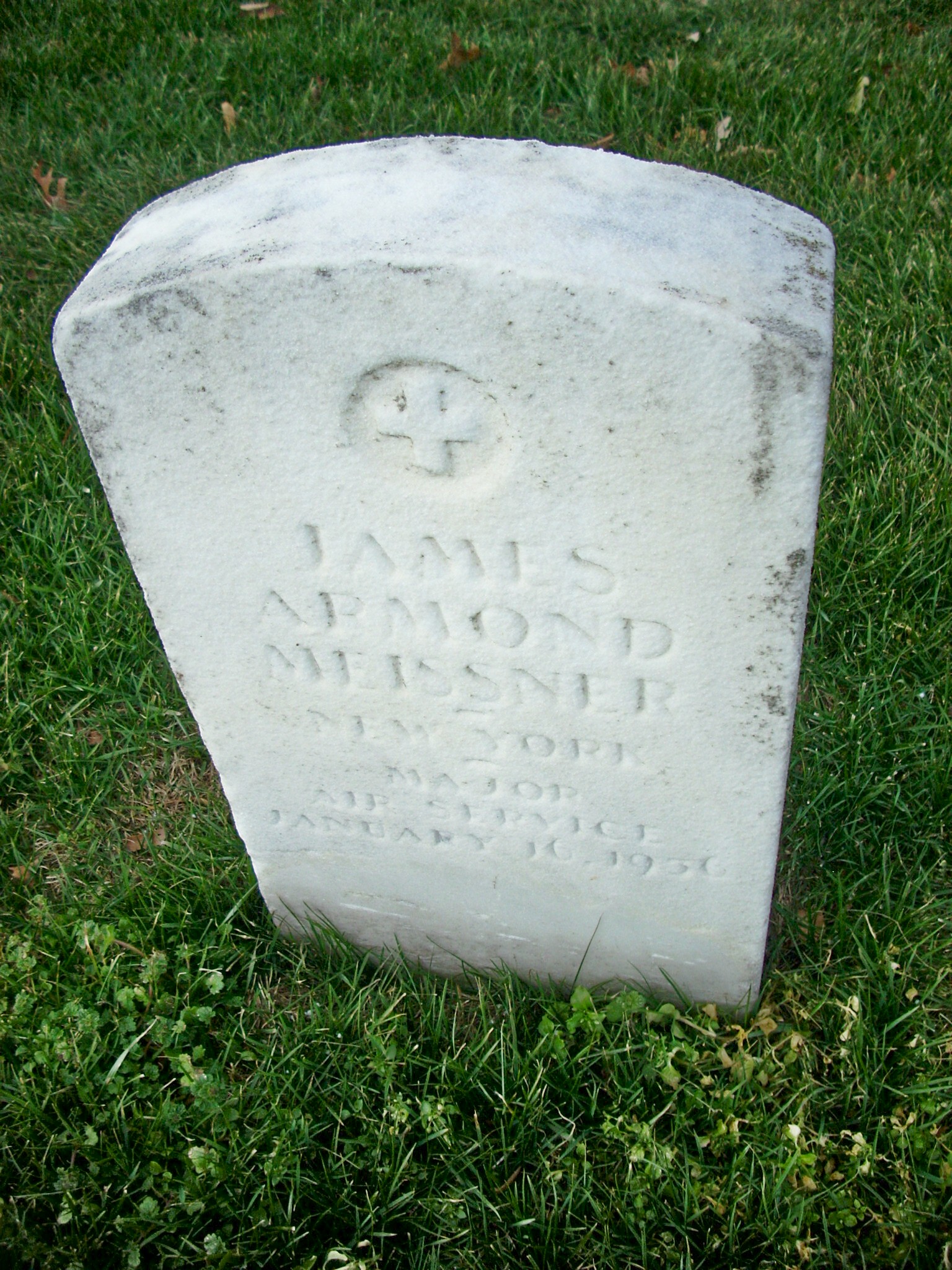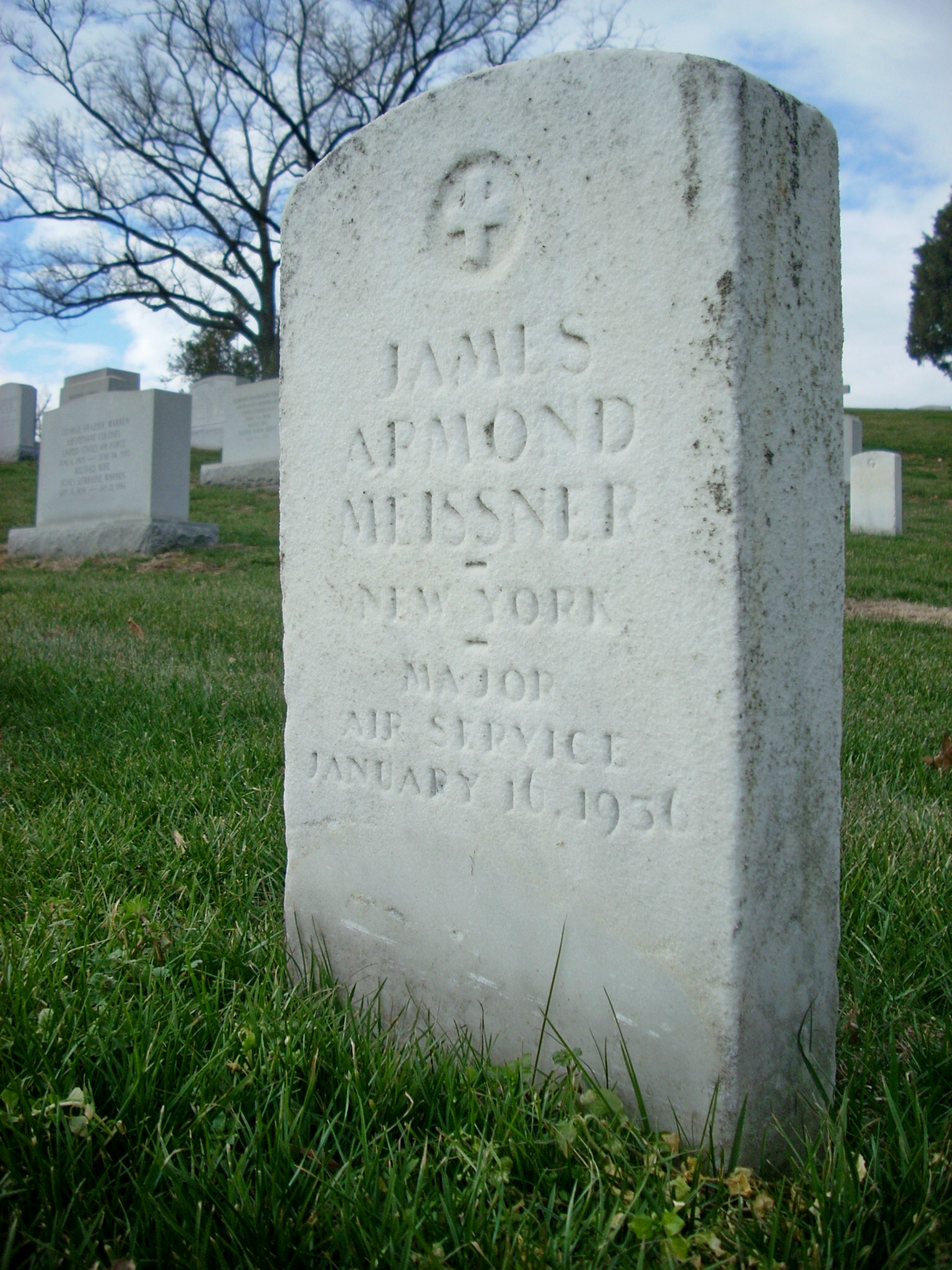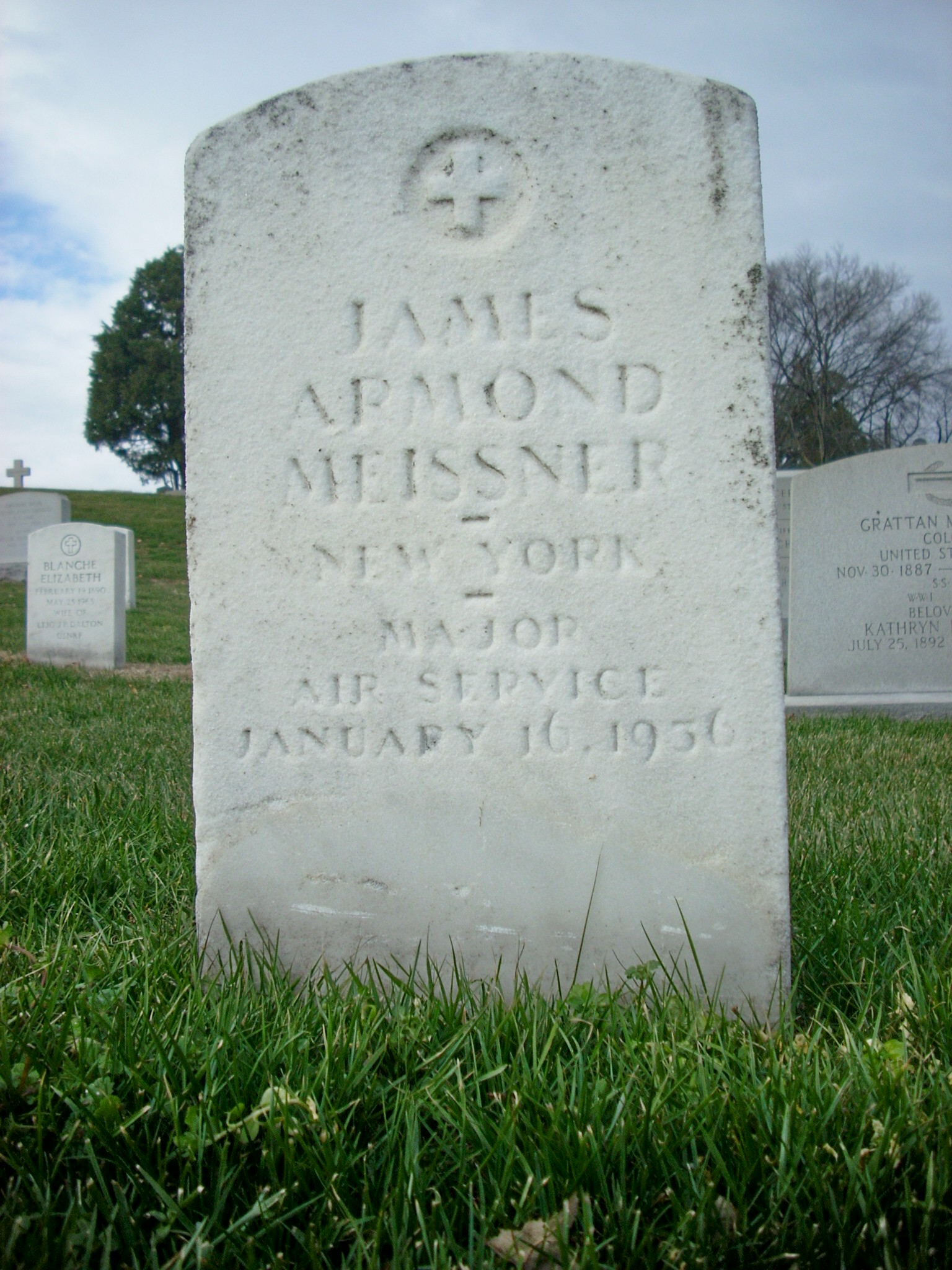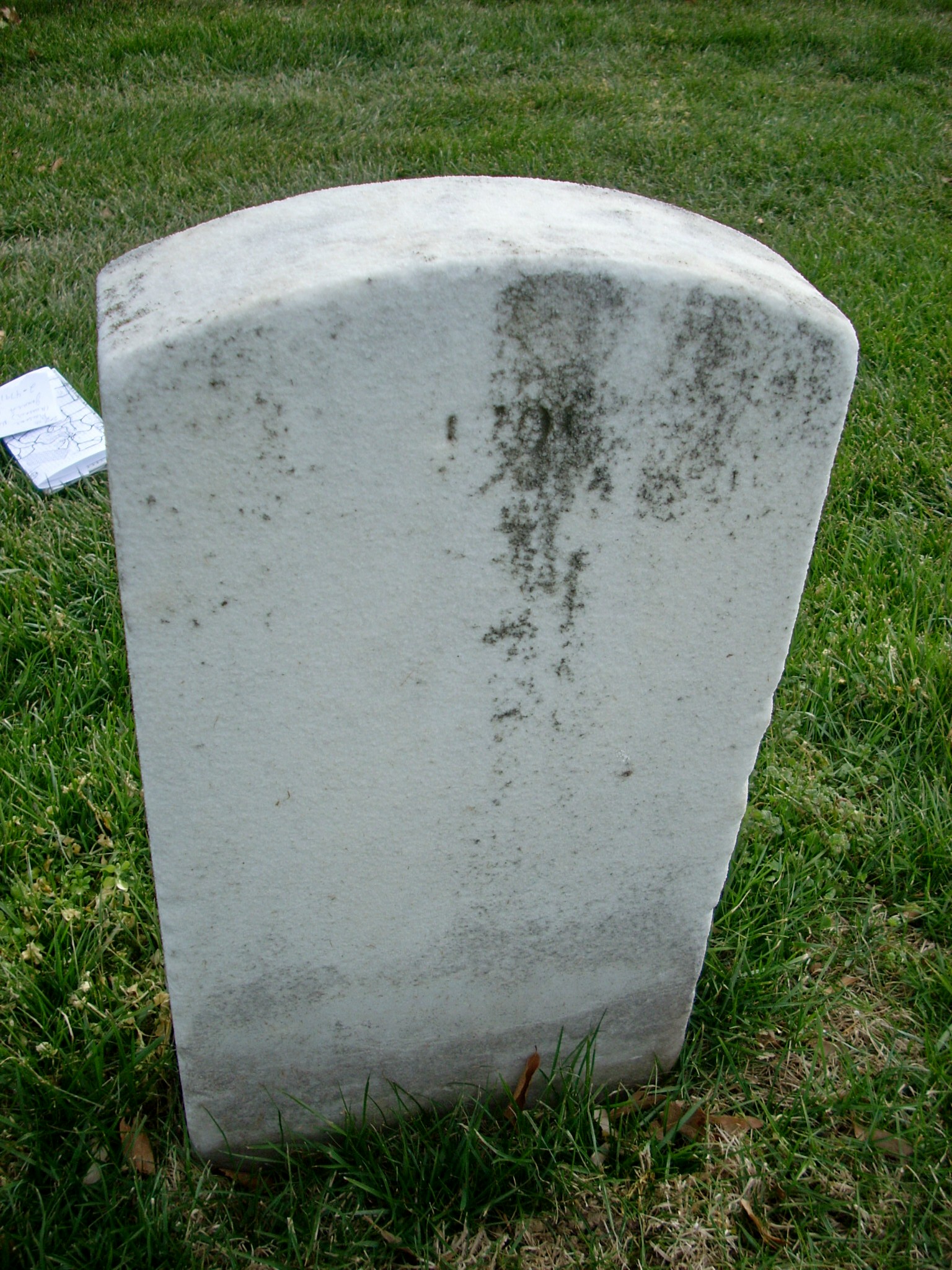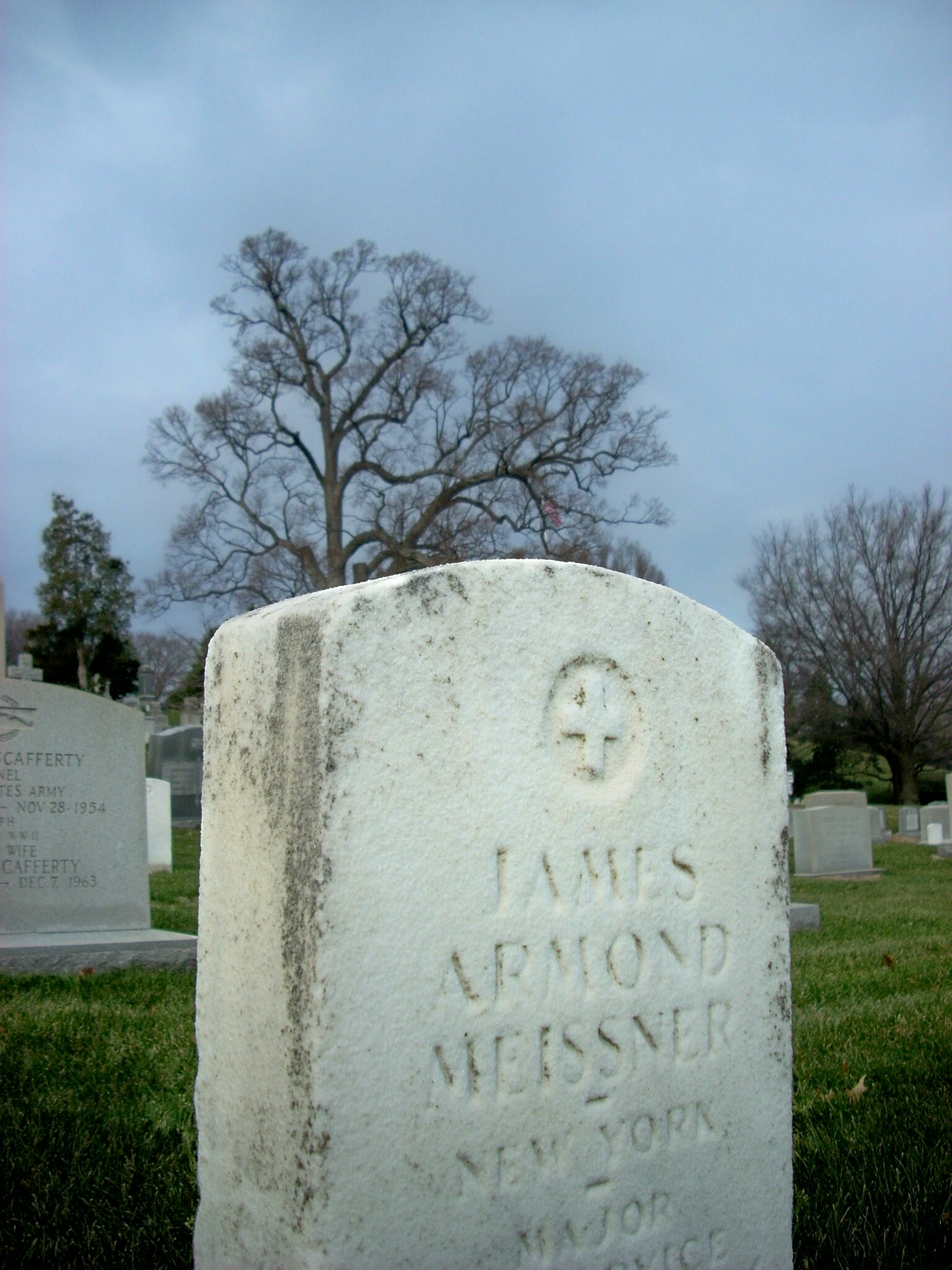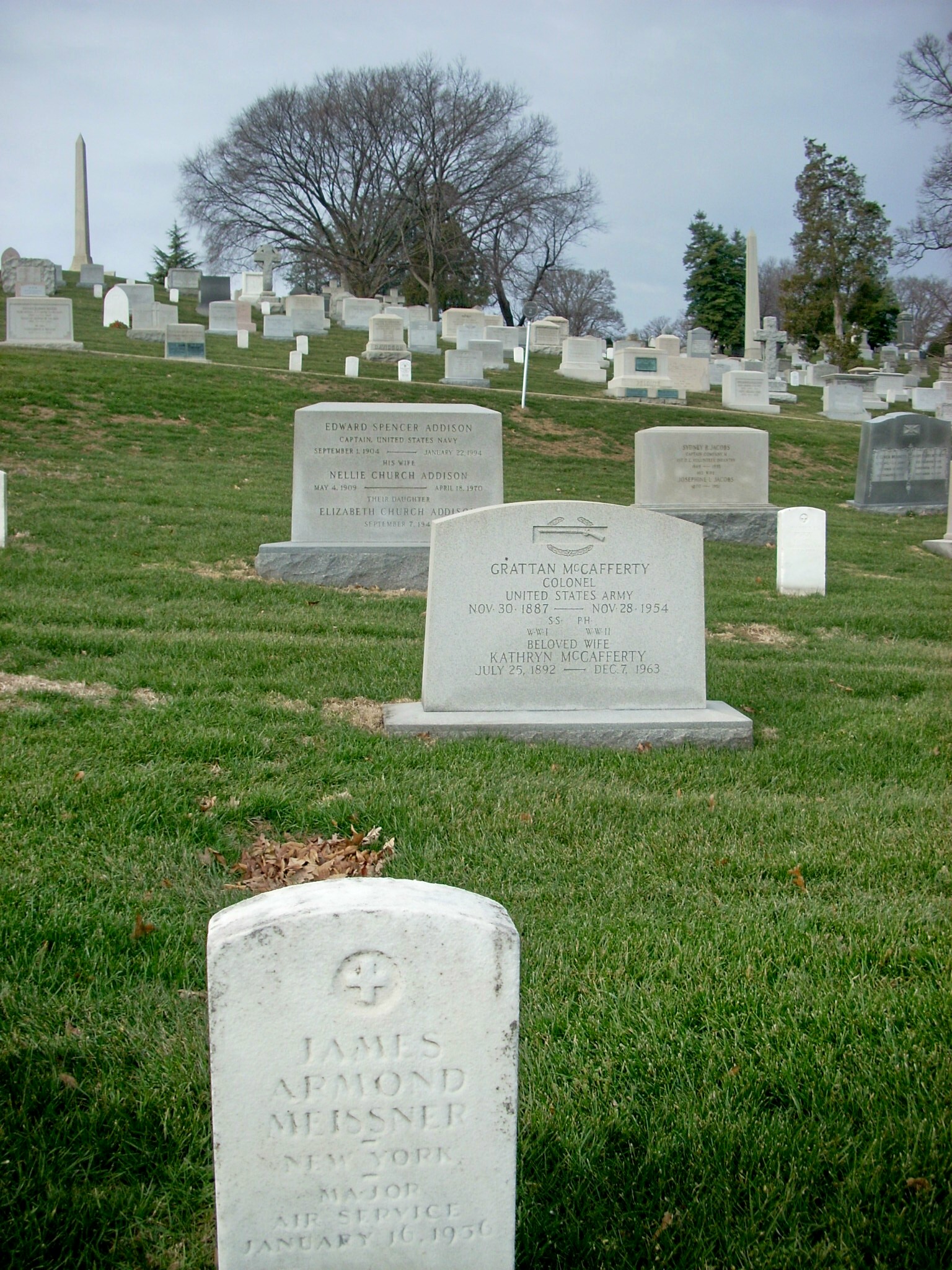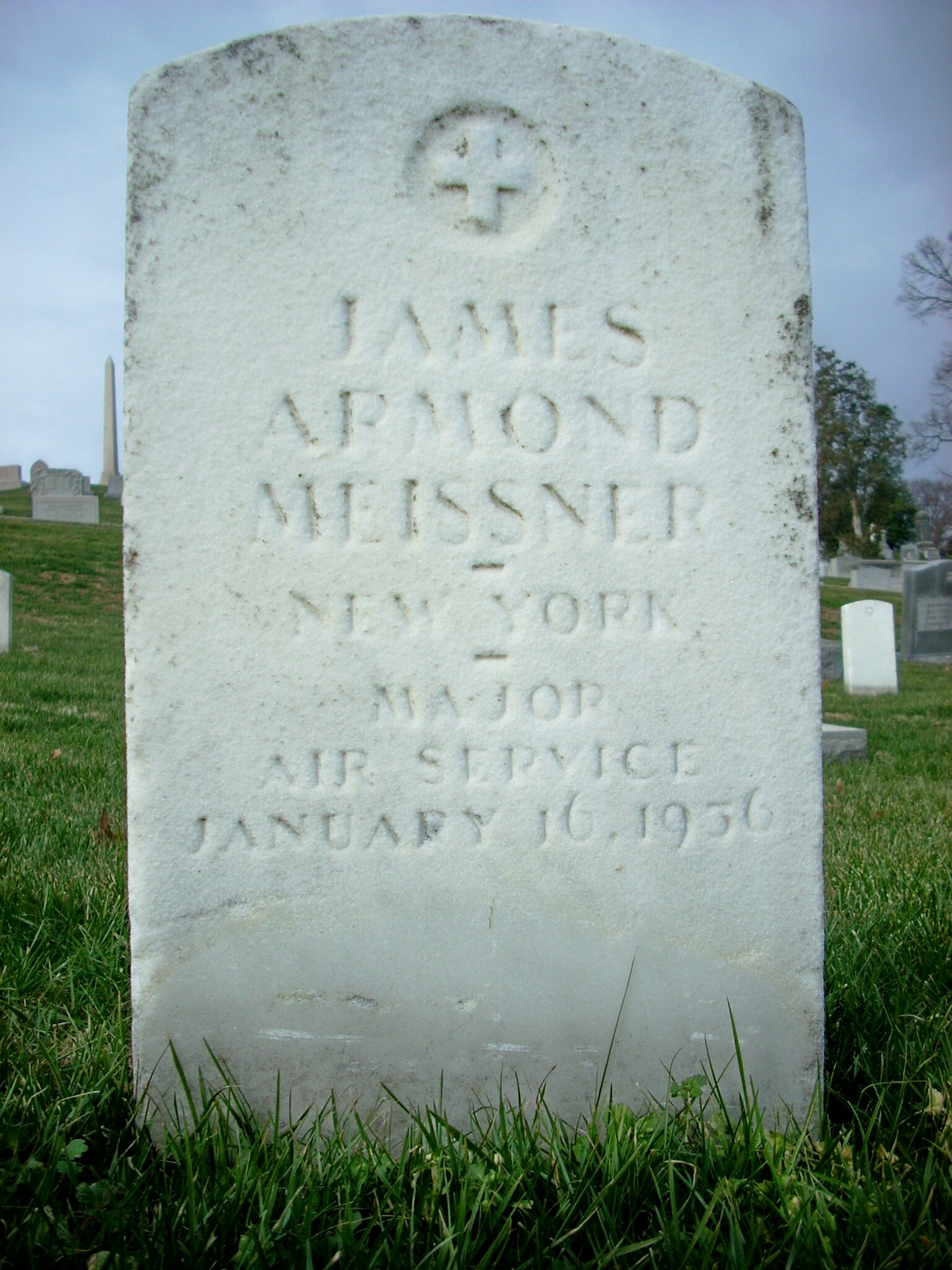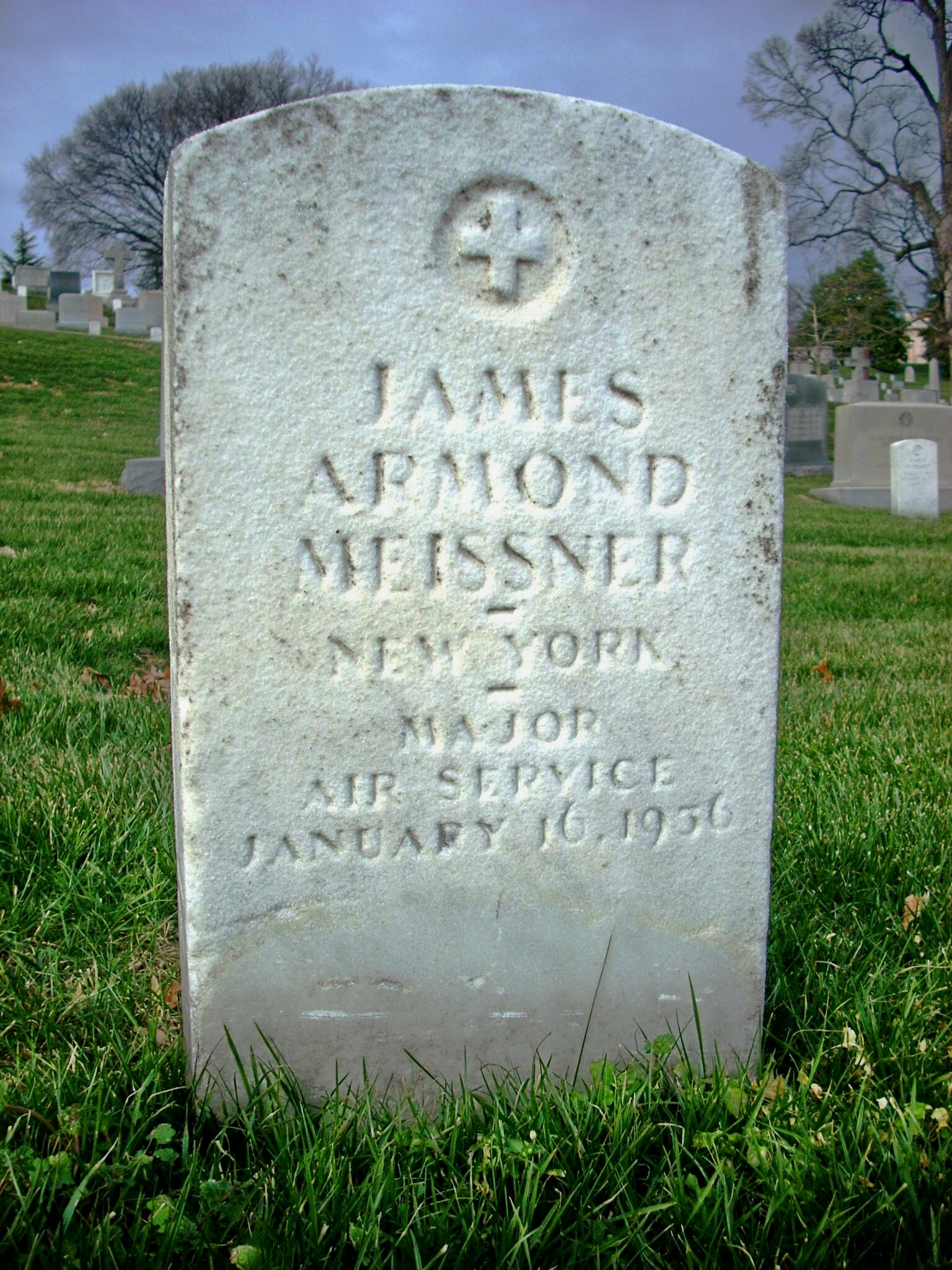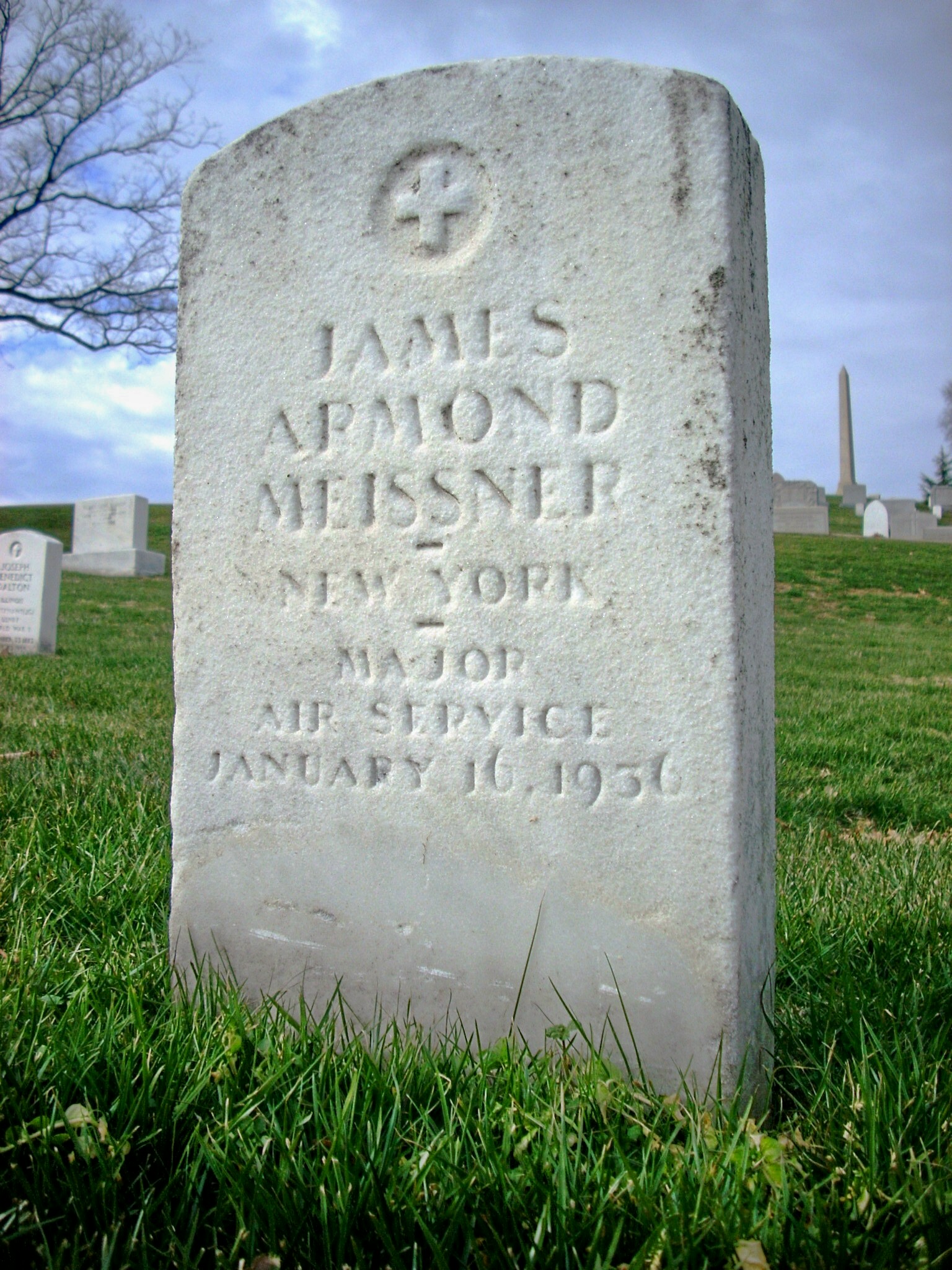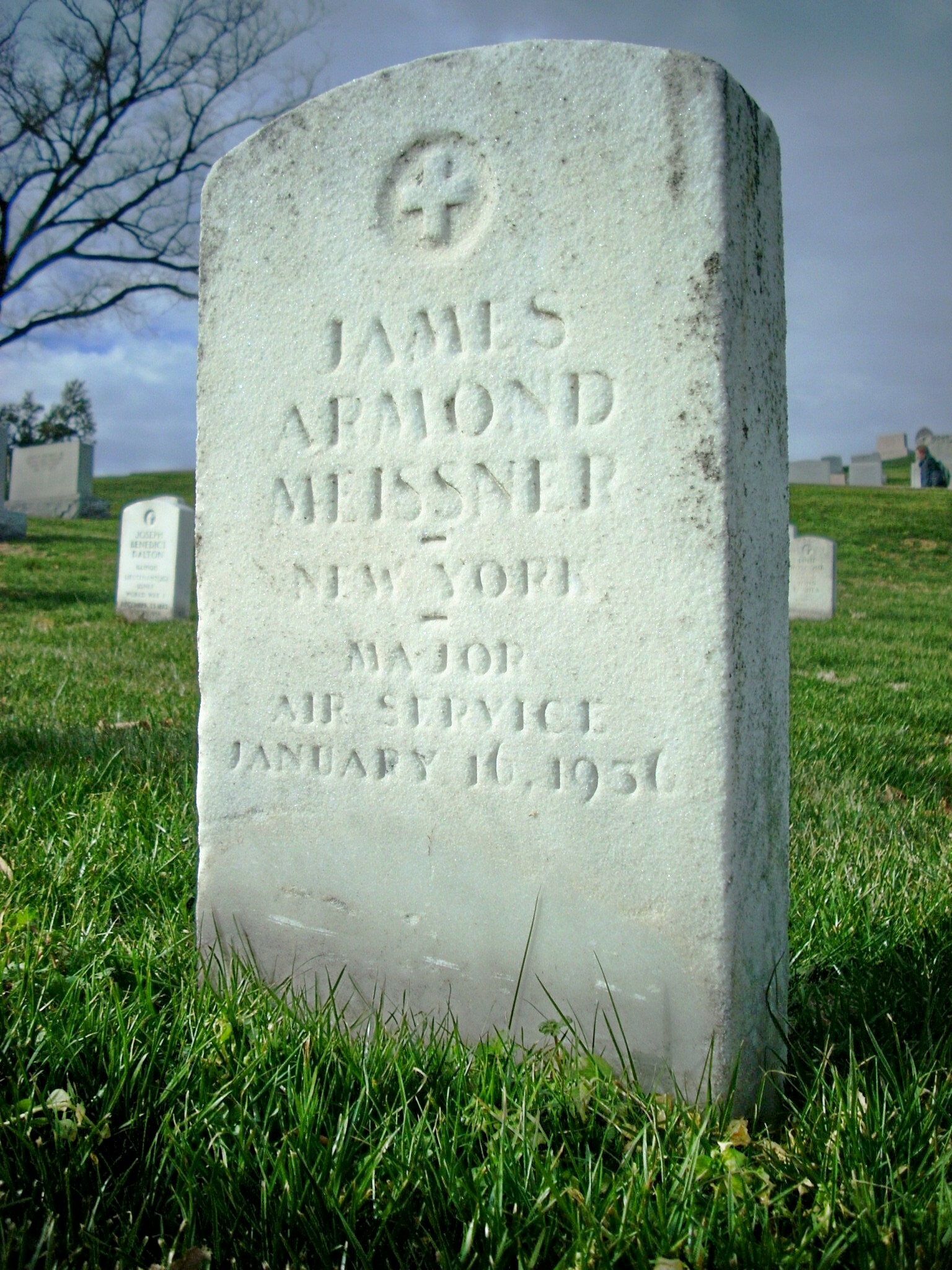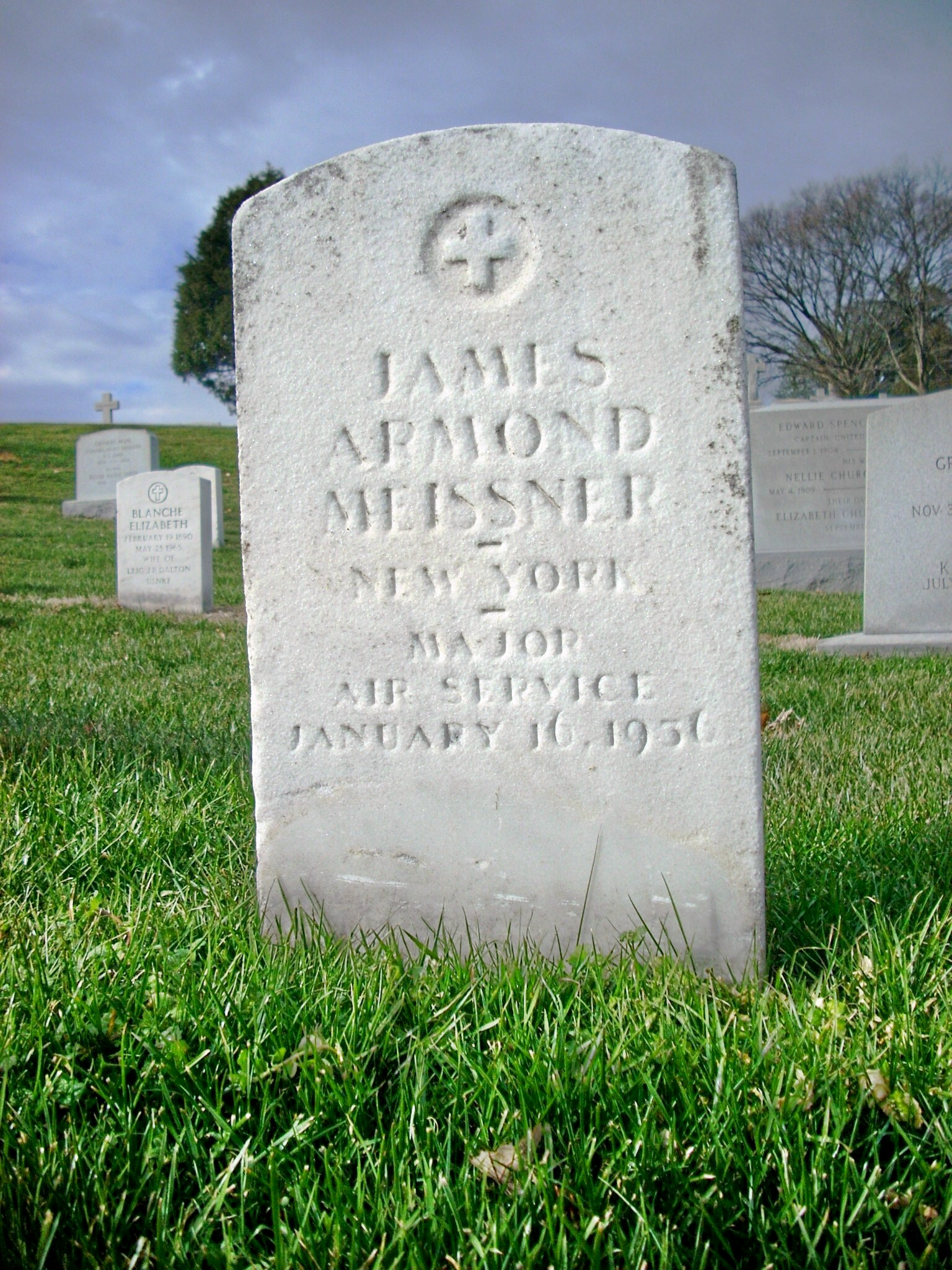- Name: James Armand Meissner
- Country: United States
- Rank: Captain
- Service: United States Air Service
- Units: 94th Aero, 147th Aero
- Victories: 8
- Date Of Birth: July 20, 1896
- Place of Birth: Londonderry, Nova Scotia
- Date Of Death: January 16, 1936
- Place of Death: Birmingham, Alabama
An undergraduate at Cornell University, Meissner dropped out of school to join the United States Air Service in 1917.
On March 17, 1918, he was assigned to the 94th Aero Squadron in France, credited with four confirmed victories while flying a Nieuport 28. In July, he assumed command of the 147th Aero Squadron, scoring four more victories while flying the SPAD S.XIII.
After the war, Meissner organized the Alabama National Guard in 1920 and for a time, served as its commanding officer.
MEISSNER, JAMES A.
(First Award)
First Lieutenant (Air Service), U.S. Army
Pilot, 94th Aero Squadron, 1st Pursuit Group, Air Service, A.E.F.
Date of Action: May 2, 1918
Citation:
The Distinguished Service Cross is presented to James A. Meissner, First Lieutenant (Air Service), U.S. Army, for extraordinary heroism in action in the Toul sector in May 2, 1918.
First Lieutenant Meissner attacked three enemy planes at an altitude of 4,800 meters over the Foret De La Rappe, France. After a short fight he brought down one of the machines in flames. During the combat the entering wedge and the covering of the upper wings of his plane were torn away and after the battle he was subjected to heavy fire from antiaircraft batteries, but by skillful operation and cool judgment he succeeded in making a landing within the American lines.
General Orders No. No. 121, W.D., 1918
Birth: 7/20/1896 – Londonderry, Nova Scotia, Canada
Home Town: Brooklyn, NY
Other Award: Distinguished Service Cross w/OLC (WWI)
MEISSNER, JAMES A.
(Second Award)
First Lieutenant (Air Service), U.S. Army
Pilot, 94th Aero Squadron, 1st Pursuit Group, Air Service, A.E.F.
Date of Action: May 30, 1918
Citation:
The Distinguished Service Cross is presented to James A. Meissner, First Lieutenant (Air Service), U.S. Army, for extraordinary heroism in action near Jaulny, France, May 30, 1918. Lieutenant Meissner attacked two enemy planes at an altitude of 4,500 meters above Jaulny, and after a sharp engagement shot one down in flames and forced the other back into its own territory.
General Orders No. No. 121, W.D., 1918
Birth: 7/20/1896 – Londonderry, Nova Scotia, Canada
Home Town: Brooklyn, NY
Other Award: Distinguished Service Cross (WWI)
Courtesy of Matthew H. Scales, Staff Sergeant, United States Air Force Historical Research Agency: January 2009:
The son of a U.S. Steel board member, James Armand Meissner was born on July 30, 1896 in Loudoudery, Novia Scotia on the east coast of Canada. After graduating from Brooklyn New York’s Erasmus High School in 1914, Meissner enrolled at Cornell University. Majoring in engineering, Meissner was a Private First Class in Cornell’s Cadet Corps and a member of the Sigma Phi Epsilon fraternity.
A few years later, the United States could hear the drums of war were beating louder than ever and on April 6, 1917 President Woodrow Wilson requested a declaration of war against Germany from Congress. They granted this declaration and the US entered the war the next day. With this declaration came a flood of volunteers to go “over there” and fight the troops of Kaiser Wilhelm. James Meissner was no exception. Dropping out of Cornell, Meissner enlisted in the Army Signal Service (the branch of the Army then tasked with flying) as a Private First Class on May 28, 1917.
After enlisting, Meissner’s military career moved quickly. Meissner entered the United States Army School of Military Aeronautics on July 14, 1917. About a week after beginning this initial pilot training, Private First Class Meissner boarded a ship for France where he, like many other American Pilots in the First World War, continued his training under French military instructors. After completing his flight training in Tours, France, Meissner was commissioned as a First Lieutenant on November 20, 1917. Three months after receiving his commission, Lieutenant Meissner’s military career would take a turn that would change his life forever.
On March 8, 1918, Lieutenant James Meissner reported to Major John Huffer, commander of the 94th Pursuit Squadron. Known as the “Hat in the Ring Squadron”, the 94th was the first entirely American unit to fly a fighter patrol. Two days before Meissner arrived at the unit however, another young Lieutenant by the name of Eddie Rickenbacker reported to the 94th. Lieutenant Rickenbacker would go on to be the highest scoring American Ace of the war, shooting down a grand total of twenty-six enemy aircraft. In addition to these new pilots, the 94th was also made up of veteran American pilots that had flown with the French before America entered the war. Named the Lafayette Escadrille, the squadron was made up entirely of American pilots along with two French officers. It was in the 94th that Meissner put his training to the test and proved himself as a pilot.
On May 2, 1918, while flying the French-made Nieuport 28, Meissner won his first aerial kill. This action earned him his first Distinguished Service Crosses (D.S.C.), one of the highest honors bestowed by the U.S. Military. On May 15, the French too showed their appreciation for Meissner’s exploits on this mission when they awarded him their medal for bravery, known as the Croix de Guerre. About two weeks later on May 30, James Meissner won a second Distinguished Service Cross when he shot one plane down and “forced the other back into its own territory” Meissner would gain another two kills to his credit before the Army Air Service realized that a man with his skill and knowledge needed to be placed in a leadership position. In July of 1918, Meissner was made the commander of the 147th Pursuit Squadron. With this squadron, Meissner began flying the improved French built Spad XIII fighter and would use it to claim another four kills (including one balloon).
After the Great War ended in Europe, James Miessner returned to the United States and was discharged from the Army on March 25, 1919, having reached the rank of Major just five months before. Shortly after returning to the States, he returned to Cornell University and received his Masters Degree in Engineering in 1919. The same year, Meissner moved to Birmingham and began working as a rail mill for Tennessee Coal and Iron, a job he presumably got through his dad’s connections with U.S. Steel. In addition to his new job, the former WWI ace met and married Miss Elva Kessler, the daughter of a landscape architect from Augusta, Georgia.
Late in 1919, James Meissner along with Henry Badham created the Birmingham Flying Club. Nicknaming it after the original French unit, the founding members called it the “Birmingham Escadrille”. Additionally, the club began to look for its own airfield to use. Their search ended when a steel company in Birmingham agreed to lease the club a tract of land by one of their furnaces in Ensley. The proximity to the furnaces provided a benefit to the club as the hot iron provided a bright landmark for pilots to find the field. Simply starting a flying club was not enough for Meissner however. The war hero from New York wanted to continue to serve his country and his new state so shortly after forming the club, Meissner set out to get it formally recognized (and therefore funded) by the federal government as an air service unit of the National Guard.
The process of gaining Federal recognition for the “Birmingham Escadrille” was not easy. National Guard units at the turn of the twentieth century were not looked upon favorably due in large part to events such as the Homestead strike and other labor disputes that were broken up by National Guard units. Meissner used his fame as a World War One Ace to help overcome this hindrance. Another obstacle for Meissner and his club was that the Federal Government worried that once they provided funds and aircraft to the Guard the unit would then use the new resources for commercial gain. The Adjutant General of Alabama, Colonel Hartley A. Moon in a letter to Congressman Edward Almon assured the representative that while the unit would allow commercial use of their field (as it would not be federally controlled) they would not commercialize the actual unit itself. Yet another setback for the fledgling flying club was the simple fact that at the time, the National Guard did not have many air service units. The first state with an air arm of its National Guard was New York. Created by Captain Raynal Cawthorne Bolling and the state’s Adjutant General, Major General John O’Ryan, the New York Air National Guard was created in 1915 and according to historian Dr. Charles J. Gross, actually “became an important source of pilots and air leaders during World War I.”
Meissner and Colonel Moon, along with other members of the flying club finally overcame all of the setbacks and on January 21, 1922, officials in the War Department organized the 135th Observation Squadron, and allotted it to the state of Alabama. Placing the unit under the command of Major James Meissner, the new observation squadron became the very first Air National Guard Unit in the state of Alabama and only the seventh such unit in the United States.
The 135th continued to grow throughout the early 20th century. On May 1, 1923, the squadron was redesignated the 114th Observation Squadron followed by a second redesignation on January 16, 1924 when the squadron became the 106 Observation Squadron. The unit faced a sad day on January 16, 1936 when “Jimmie” Meissner, the father of the Alabama Air National Guard died from pneumonia. The city held a memorial service including a flyover by the planes of the unit he had founded. Additionally, his old friend and brother in arms Eddie Rickenbacker returned to Birmingham to be an honorary pall-bearer for his old wingman. Four months later on May 2, the Major’s ashes were buried with full military honors in Arlington National Cemetery in Arlington, Virginia.
The unit continued to grow and change through the years. Despite growth and change, the squadron continued in its role as an observation squadron until 1943 when it was re-designated the 100th Bomb Squadron. After the war the squadron returned to its observation/recconnaissance role flying the RB-26, RF-84 and the RF-4. In 1994, the unit took on a new mission with the delivery of nine KC-135R refueling aircraft and was re-designated the 106th Air Refueling Squadron of the 117th Air Refueling Wing, a mission that it continues to this day.
MEISSNER, JAMES A
- MAJ USA
- DATE OF DEATH: 01/16/1936
- BURIED AT: SECTION 2 SITE 4791
- ARLINGTON NATIONAL CEMETERY
Michael Robert Patterson was born in Arlington and is the son of a former officer of the US Army. So it was no wonder that sooner or later his interests drew him to American history and especially to American military history. Many of his articles can be found on renowned portals like the New York Times, Washingtonpost or Wikipedia.
Reviewed by: Michael Howard

